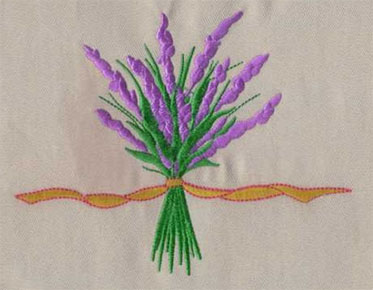The Right Needle for Your Digitizing Embroidery Machine
A high-quality needle is an important part of your embroidery machine. The quality of the embroidery depends on it. In fact, even the smallest flaws in an embroidery's appearance can be traced back to a low-quality needle. If you want to make flawless embroideries, then it is important to understand how to pick the right needle and avoid bad quality ones that may cause damage at the end. Use these guidelines from Eagle Digitizing to find the right needle for your machine
Before
choosing an embroidery machine needle, the first thing you need to consider is
the specifications of the embroidery machine, the fabrics and threads you will
use and the stabilizers used in the project. Depending on your project, some of
these factors must be considered when choosing an embroidery machine needle.
Then, when you choose the right stitch type for your embroidery design, you
will automatically reduce thread breaking, so your embroidery design looks
smooth, clear, and clean.
How
does an embroidery machine needle work?
On closer inspection, the round and flat surfaces of the embroidery machine needles can be seen. These geometric differences allow them to work seamlessly with embroidery machines.
Some important parts are the tip, the handle, the wood, and the eye. Each of these components affects the performance of a French embroidery machine needle. Therefore, when choosing an embroidery machine needle for a particular project, it is important to consider each component.
What's
the difference between a sewing needle and an embroidery machine needle?
The trained eye may not notice the subtle differences between a sewing machine needle and an embroidery machine needle. Sewing machine needles cannot be used with embroidery machine needles because they are specifically made for embroidery. However, sewing needles are also suitable for machine embroidery (although not recommended).
The biggest difference between the two types of needles is the shape of the eyes and scarf. The needles of the embroidery machine are specially made for them. As a result, their eyes are longer and different in shape from the needles used in French embroidery machines. Subtle changes in needle design minimize thread breaking during embroidery tasks and help embroidery machine needles handle delicate thread.
The important features of embroidery machine needle
The universal needle has a rounded tip, similar in shape to the universal point on a French embroidery machine needle. Embroidery machine needles are dotted somewhere between sharp and bead-shaped, as they are suitable for almost all major materials and stabilizers. When using very fine stabilizers, such as water soluble stabilizers, the needle should be sharpened. A sharp needle is easier to penetrate without tearing the stabilizer.
The needles used in embroidery machines are usually 70-110 mm. Larger needles are usually thinner than smaller ones. It is important to note that size selection will ultimately depend on the fabric, stabilizer and thread chosen for your embroidery project. When choosing the stitch size of an embroidery machine needle, it is important to consider stitch density.
For embroidery projects, you should determine what kind of needle you need by looking at the embroidery fabric and design. Titanium needles are ideal for embroidering large or complex patterns on denim or dense materials, such as denim. Their strength allows them to easily penetrate fabric. In addition, the ends and surfaces of titanium needles retain their shape and size over time. These needles tend to last three to five times longer than traditional chrome-plated needles.
How
do I select a needle for a particular embroidery machine?
Another important factor to consider when purchasing embroidery needles is to check that the type of needle you purchase is compatible with your embroidery machine. To choose a needle type for your machine, read the machine's manual. The needle case required by different embroidery machines may be different; Your machine may not accept all needles.
How
to choose the right embroidery machine needle for your project?
When choosing the right needle for your embroidery project, it is crucial to consider the range of work, from the weave and weight of the fabric to the complexity of the design, stitch density and stabilizer type, among others. It's important to consider these factors before coming up with the ideal embroidery machine needle for any project. The following examples should help you understand these factors:
Denim
and canvas are heavy fabrics that require larger needles for embroidery.
Lightweight
fabrics, such as silk or Baptiste, require smaller needles
When
embroidering small print, choose a sharp needle.
If
you are embroidering on a dense fabric such as leather or denim, use a sharp
titanium needle.
For
best results
As
you know by now, you must have mastered many skills in determining the type of
embroidery needle and its differences. Each embroidery project has unique needs
and requirements, which make choosing the right embroidery machine needle challenging.
Therefore, we cannot recommend one stitch that is suitable for every embroidery
project. Instead, all major factors should be considered, such as the
complexity of the design, the type of fabric and the type of stabilizer. As
first-time embroiderers, we recommend keeping a variety of stitch patterns in
stock to check whether the stitch you choose is compatible with your embroidery
design..



